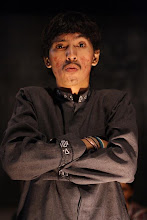Friday, May 11, 2012
Dale's Cone Experience
Cone’s
dale experience is a model that incorporates several theories related to
instructional design and learning processes. Edgar Dale theorized that learners retain more information by what they “do”
as opposed to what is “heard”, “read” or “observed”. His research led to the development of the
Cone of Experience. Today, this
“learning by doing” has become known as “experiential learning” or “action
learning”. In Cone’s dale experience, students will be
able to do at each level of the Cone (the learning outcomes they will be able
to achieve) relative to the type of activity they are doing (reading, hearing,
viewing images, etc.). Dale believes that
people generally remember 10 % what they read, 20% what they hear, 30% what they
see, 50% what they hear and see-video, 70% what they say or write, and 90% what
thee say as the they do something. It means that learning will be more successful
if the learners experience what they are learned. But it doesn’t means that
reading, listening and so on is not important. Just
as Gardner describes the Multiple Intelligences and appealing to them all,
Dale’s Cone emphasizes learning experiences that appeal to the different senses
and the different ways in which we learn.
Learning Theories
Behaviorism is grounded by the observable change of behavior. This theory focuses on how learning process affects the change of behavior. The behavior can change if there are stimulus and respond. The stimulus can be how the teacher treats the students, respond can be the change of students' behavior.
Cognitivism tries to explain how students think. This theory says that people learn because of their ability to interpret the events or incidents that happen around them. It concerns more in the learning process than the result of that learning itself, since this theory says that learning occurs complex thinking process.
In constructivism, how to acquire knowledge is based on the students' activeness. This theory says that learning is a process managed the students to do active processes in order to build new knowledge based on the data. A learning process must be designed and managed as well as possible so that it can make students organized their own experiences to be valuable knowledge.
Sunday, March 11, 2012
What Is Pantomime?
Mime Demo "at the bus stop"
The video above is one of the examples of pantomime. So, what is pantomime?
Wikipedia says that pantomime is a musical-comedy theatrical production traditionally found in the United Kingdom, Australia, New Zealand, Canada, Zimbabwe, Jamaica, South Africa, India, Ireland, Gibraltar and Malta, and is mostly performed during the Christmas and New Year season. But nowadays, it becomes more than only musical-comedy theaterical. It can be showed as tragic, romance, or even religious drama.
Based on what I learned, pantomime is a kind of arts that tells story by only gestures (body movements) and expressions. No words!
Subscribe to:
Comments (Atom)

